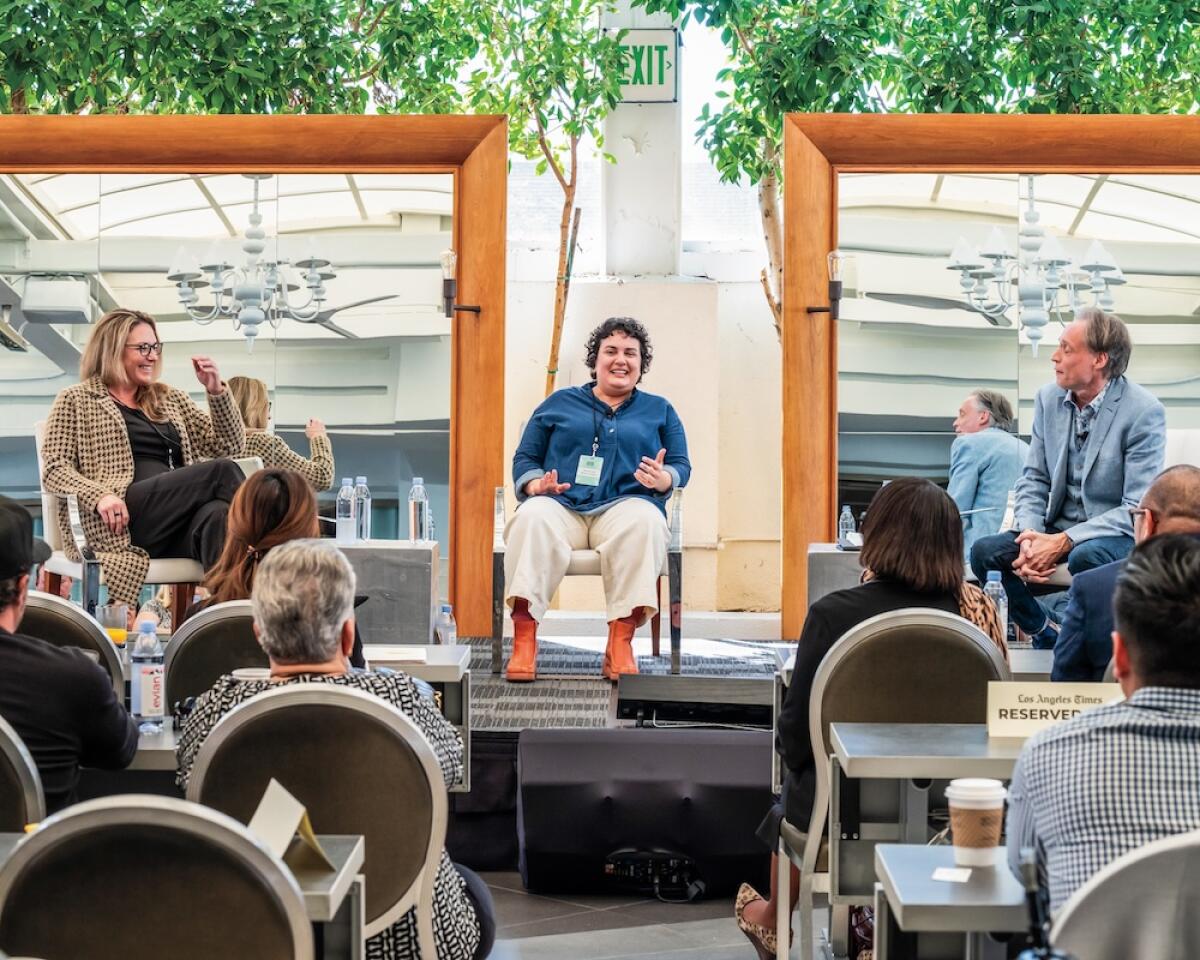Accessibility and the Bottom Line

- Share via
Almost 35 years after the implementation of the Americans with Disabilities Act, “accessibility” has taken on broad and varied meanings. More than just physical access for the most apparent of disabilities, modern thoughts on accessibility have expanded to aid those dealing with all manner of differences, from physical to emotional and temporary to permanent. Overall, accessibility is a hugely important part of DEIA, as it helps center empathy on differences beyond what people can see and creates equity for issues that, as everyone ages, they may well face in some way.
Moderator: Lawrence Carter-Long
Co-Director, DisArt
Multi-hyphenate Lawrence Carter-Long has been a modern dancer, radio show host and producer and was the curator/co-host of the groundbreaking festival “The Projected Image: A History of Disability on Film.” But most importantly, Carter- Long has been a lifelong activist for accessibility. He served as the public affairs specialist for the National Council on Disability, the independent federal agency that brought us the ADA, and joined the Disability Rights Education & Defense Fund as communications director in 2017. At DisArt, Carter-Long aids the organization in their goals toward raising the participation of disabled people in curated contemporary art exhibitions.
Panelist: Alyssa Kavner
Vice President - Clinical Training and Quality, Easterseals Southern California
Alyssa Kavner’s journey to vice president of clinical training and quality at Easterseals Southern California took several turns, but all were grounded in the practice of accelerating opportunities for those with different abilities. As a case supervisor for The Center for Autism and Related Disorders, Kavner leaned on her empathy to create better outcomes for those dealing with the often misunderstood disorder. At Easterseals Southern California, her role in several leadership positions has allowed her to grow this practice of empathy, helping more and more individuals in Southern California.
Panelist: Hannah Said
Diversity, Equity & Inclusion Practitioner, Woven Inclusion
Hannah Said is a Diversity, Equity and Inclusion (DEI) facilitator, researcher and community organizer. She recently worked at Walt Disney Company as a Diversity and Inclusion Activation Manager and currently works as a Diversity and Inclusion Business Partner at Lyft. Said also has a DEI consulting company called Woven (woveninclusion.com) and a Queer and Middle Eastern coffee pop-up called Saffron Cowboy (@saffroncowboy). She loves building diverse, inclusive and equitable communities inside and outside of the office.
Shared insights from the event
On redefining and understanding disability and its prevalence:
Lawrence Carter-Long: When talking about disability in the DEI space, there is a thing we should keep in mind: The number of disabled people in terms of percentages, according to the Centers for Disease Control and Prevention it’s 27% of the U.S. population.
Alyssa Kavner: People can be afraid. They’re fearful. And there’s language and stereotypes that exist that perpetuate disability as negative. Disability is not negative. It’s different - a different group with diverse thoughts and different styles of organization.
Hannah Said: Gender, race, sexual orientation - these tend to be the “heavy hitters” and disability is the last to be talked about, if at all. But I remember I attended a conference, and someone said, “Every single one of us, if we live long enough, is going to acquire a disability.”
On going beyond compliance and making disabled employees feel welcomed and valued in the workplace:
Kavner: Think about who your job descriptions are going to when you’re trying to recruit your talent. Do your job descriptions inadvertently tell people “I can’t work there?” You might have something that says you need to stand for six hours - do you really need to stand for six hours, or do you need to remain in your workspace for six hours with some breaks? So look at the language that is in your job descriptions to see if you’re effectively excluding people with disabilities from even thinking that they can work there.
Carter-Long: It’s very important that we include access. Without access, we have to ask ourselves certain questions: Who gets the interview? Who gets the job? Who’s making the decisions? Who’s in leadership, who writes the budget? So how can companies, individuals, organizations make their workplaces more accessible for folks with disabilities - there are resources available for companies looking to increase accessibility.
On practical ways to increase awareness of the “A” in DEIA:
Kavner: Easterseals Southern California is happy to partner with you all and help decide what you can do within your organization. We can’t tell you that there is a single package available to make you fully accessible. I do highly encourage, however, to talk to people. Say the “D word.” Say disability. Have a place where it doesn’t feel scary to self-disclose. On cost-effective and simple measures to make spaces more accessible
Said: At my company, Woven, our graphic designer and our web designer work to make websites accessible. Even just simple things like contrasting colors. You can’t put a yellow on a pink, you’ve got to use a black and white, because people who use screen readers - and not just those people who use screen readers - I think that’s annoying. I can’t see what the screen says. And that’s pretty affordable, and if you already had a team, that would be free for you. There are these little tweaks, and I think people just don’t know that these things don’t feel good to certain people because we operate in a space that is, honestly, anti-disabled.